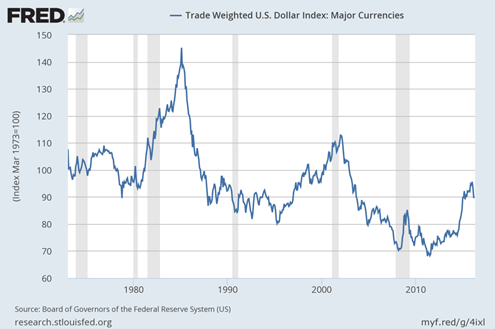Jim Rickards was good value at the London debut of his book, The New Case for Gold. Since I arrived a bit ahead of the crowd, I was able to get Jim to explain his theory that the February G20 meeting in Shanghai saw an agreement between the International Monetary Fund (IMF) and the world’s four major central banks to do a managed devaluation of the Chinese yuan without actually changing interest rates anywhere.
It’s an elegant theory and it makes a lot of sense. Jim pointed out that when the People’s Bank of China (PBOC) surprised markets in August (and again in December) of last year with a devaluation of the Chinese yuan, it sent most global stocks into an instant 10% correction. A little collusion among elite friends can prevent that sort of thing. Jim reckons that’s what Shanghai was about. How does it work?
The key to the whole thing is for the PBOC to do nothing. And because the yuan is linked to the dollar, the PBOC doesn’t have to do anything. It has to simply sit there and play dumb, with the Federal Reserve, the Bank of Japan (BoJ) and the European Central Bank (ECB) doing their part. And what is that part?
You manage to make the yuan weaker relative to the euro and the yen through talk. The ECB and the BoJ give the impression that they’re done with quantitative easing (QE), negative rates, or further stimulus measures. This happened in early March. ECB President Mario Draghi and BoJ President Haruhiko Kuroda both confounded and disappointed markets when they tempered their language about more QE and negative rates.
As a result, both the yen and the euro rallied relative to the US dollar. It was odd, at the time, to see a stronger yen and euro, even though Draghi and Kuroda didn’t actually change anything. They just changed what they said. In an era of interest rate expectation management, that was enough. You got all the effects of an interest rise in Japan and Europe without an actual interest rate rise.
Thus China got a boost in its trade with Japan and Europe without devaluing its own currency. It was a “stealth devaluation”, where the euro and yen were made to look stronger and the US dollar to look weaker. The IMF helped orchestrate the whole plot with the Fed, BoJ, ECB, and PBOC.
Sound plausible? It would mean that there’s collaboration among the world’s policy makers over whose turn it is to grow and whose turn it is to suffer. Behind all of it is the realisation that monetary policy can’t engineer growth in the private sector. All it can do now is delay a debt of reckoning that itself was caused by excessively loose monetary policy.
By the way, the chart above shows what the original Plaza Accord did to the Trade Weighted US Dollar Index in 1985. It gave the US economy a huge competitive tailwind against Japan. The dollar weakened and the yen strengthened.
But it’s the second peak in the index that’s even more interesting in the context of Apple’s earnings news. The last peak in the index coincided with the popping of the tech bubble. The rout in the dollar led to a massive bull market in commodities and emerging markets. Global capital flows shifted to faster growing and higher yielding assets outside the developed markets.
Category: Economics


